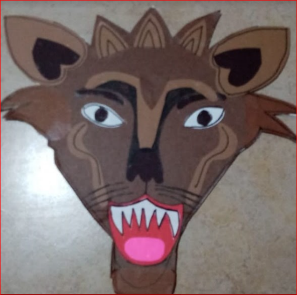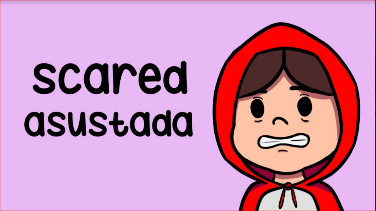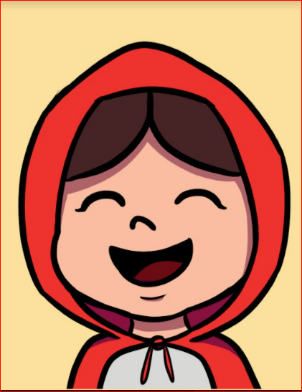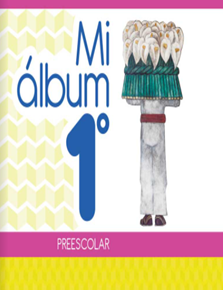Lo que me hace sentir
Valoración de la comunidad:
Última Actualización:
6 de Febrero de 2025 a las 16:49
Lo que me hace sentir
Aprendizaje esperado: explora libros de cuentos.
Énfasis: explora distintos sentimientos que pueden surgir a partir de la lectura de un cuento.
¿Qué vamos a aprender?
Aprenderás los nombres de algunos sentimientos.
Have you been using your mouth cover? ¿Has estado utilizando tu cubrebocas?
Remember it is very important to use it if you must leave your home and remember to wash your hands constantly. / Recuerda que es muy importante usarlo si tienes que salir de casa, y recuerda lavarte las manos constantemente.
But this is not all, you must keep in mind these recommendations. / Pero eso no es todo. Debes tener en cuenta estas recomendaciones.
- Video recomendaciones.
(del min. 3.39 al 4.02)
¿Qué hacemos?
Are you in your study space, ready to have fun learning new things in English? / ¿Estás en tu lugar para estudiar, listo o lista para divertirte aprendiendo nuevas cosas en inglés?
You must take care of yourself, remember some recommendations that you already learned in a song. / Debes cuidarte, recuerda algunas recomendaciones que aprendiste en una canción.
The songs says: Study zone, quiet please, wash your hands, wear a mask, don´t touch your face, sanitize your table and materials. / La canción dice: Zona de estudio, silencio por favor, lavarse las manos, usar mascarilla, no tocarse la cara, higienizar la mesa y los materiales.
Escucha y observa las recomendaciones de la maestra Ramona.
- Recomendaciones de maestra Ramona.
https://youtu.be/rNFy1MjRLWo
(del min. 4.30 al 5.03)
Today you are going to learn the names of some feelings. / Hoy vas a aprender los nombres de algunos sentimientos.
You are going to do it through a story. /Lo vas a hacer a través de un cuento.
The story is called: Little Red Riding Hood. It was written long time ago by Charles Perrault. / El cuento se llama Caperucita Roja. Fue escrito por Charles Perrault hace mucho tiempo.
You have already listened to two different stories in previous lessons. Remember they were Goldilocks and the three bears and The ugly duckling. / Has escuchado dos cuentos en sesiones anteriores. Recuerdas fueron los de Ricitos de oro y los tres osos y El patito feo.
Listen to the story: Little Red Riding hood. / Escucha el cuento de Caperucita Roja.
This story takes place in a forest. / Este cuento toma lugar en el bosque.
Would you like to listen to it? Your friend Nicolas is going to tell you/ ¿Te gustaría escucharlo? Tu amigo Nicolás te lo va a contar. - Video Nicolás/Caperucita Roja.
(del min. 6.57 al 12.38)
Please look at these images. / Por favor observa las imágenes.
- This is grandma. / Esta es la abuela.

- This is the wolf. /Este es el lobo.

Now look at this image of the wolf. /Ahora, observa esta imagen del lobo.

This is the image of the wolf pretending to be Little Red Riding Hood’s grandma. /Esta es la imagen del lobo pretendiendo ser la abuelita de Caperucita.
How would you feel if you were Little Red? / ¿Cómo te sentirías si fueras Caperucita Roja?
Nicolas comments he would feel scared. / Nicolas comenta que se sentiría asustado.
And you? / Y tú? How would you feel! / ¿Cómo te sentirías tú?

Mention the other feelings that Little Red Riding Hood experienced in the story. / Menciona algunos otros sentimientos de Caperucita Roja:
Repeat them so you memorize them. / Repítelos para que te los memorices.
- Scared / Asustada/o.

- Happy /Alegre

- Sad / Triste

- Angry / Enojado/a.

See the illustrations where you can see the different characters of the story. Observa las ilustraciones donde se pueden observar los personajes del cuento.
- Grandmother. / La abuela.

- Little Red Riding Hood. / Caperucita Roja.

- The Wolf. / El lobo.

- The woodcutter. / El leñador.

Look at these 4 illustrations and think. How would you feel if you were Little Red Riding Hood? / Observa estas cuatro ilustraciones y piensa, ¿Cómo te sentirías si tu fueras Caperucita Roja?
Put the feeling that corresponds to each illustration. / Pon el sentimiento que le corresponde a cada ilustración.
Anota en tu cuaderno el número de la imagen y el sentimiento que le corresponde.
Example. / Ejemplo.
- Little Red Riding Hood takes food for grandma. / Caperucita lleva comida para la abuela.
What is the right feeling? /¿Cuál es el sentimiento correcto? - Happy / Feliz

Continúa con los siguientes ejemplos.
The Wolf sees Little Red Riding Hood. /El lobo ve a Caperucita.
- Scared / Asustada

Grandma is sick. / La abuela está enferma. - Sad / Triste

The woodcutter helps Little Red and grandma. / El leñador ayuda a Caperucita y a la abuela.
Happy / Feliz

¿Ya te aprendiste muy bien el nombre en inglés de los sentimientos de Caperucita?
No solo los personajes de los cuentos tienen sentimientos: todos, los que leen o escuchan un cuento, tienen diferentes sentimientos dependiendo de lo que vaya pasando en el cuento.
Watch a video where Camila tells how she feels when she listens to this story. She will show her book where she registered all these feelings. / Observa un vídeo en el que Camila cuenta lo que siente al escuchar esta historia. Ella va a mostrar su libro donde registró todos estos sentimientos.
Observa el libro de los sentimientos de Camila.
- Camila shows a book about her feelings.
(de min. 21.16 al 23.02)
Review the feelings that Camila mentioned in her book. / Repasa los sentimientos que Camila menciona en su libro.
- Happy / Feliz
- Angry / Enojada
- Sad / Triste
- Scared / Asustada
You can also create your own book and register the feelings that produces in you when listening to a story. / También puedes crear tu propio libro y registrar los sentimientos que te produce escuchar una historia.

Now that you know how to name feelings in English, you are ready to sing the How are you feeling song. / Ahora que ya sabes cómo nombrar los sentimientos en inglés, estás listo para cantar la canción, ¿Cómo te sientes?
Do you want to sing it? the song goes like this /¿Quieres cantarla? La canción dice asi:
La canción dice:
| English | Español |
| How are you feeling? I am happy, happy, happy, happy, happy, happy, happy. How are you feeling? I am sad, sad, sad, sad, sad, sad, sad, sad. How are you feeling? I am angry, angry, angry, angry, angry. angry, angry. How are you feeling? I am scared, scared, scared, scared, scared, scared, scared. How are you feeling? I am happy, happy, happy, happy, happy, happy, happy. How are you feeling? How are you feeling? |
¿Cómo te sientes? Estoy feliz, feliz, feliz, feliz, feliz, feliz, feliz. ¿Cómo te sientes? Estoy triste, triste, triste, triste, triste, triste, triste. ¿Cómo te sientes? Estoy enfadado, enfadado, enfadado, enfadado, enfadado, enfadado. ¿Cómo te sientes? Estoy asustado, asustado, asustado, asustado, asustado, asustado. ¿Cómo te sientes? Estoy feliz, feliz, feliz, feliz, feliz, feliz. ¿Cómo te sientes? ¿Cómo te sientes tú? |
Observa el siguiente video, canta con Caperucita.
- Video Canción.
(del min. 23.30 al 24.21)
How are you feeling? / ¿Cómo te sientes?
- Are you angry? / ¿Estás enojada o enojado?
- Are you sad? / ¿Estás triste?
- Are you scared? / ¿Estás asustado/a?
- Hopefully, you are happy. /Ojalá que estés feliz.
Escucha a Caperucita cantando.
When the woodcutters saved Little Red, she was so happy that she started to sing this song. / Cuando Caperucita Roja, fue salvada por los leñadores, ella estaba tan feliz que empezó a cantar esta canción.
- Canción de Caperucita.
(del min. 25.39 al 27.13)
Did you like the song? / ¿Te gustó la canción?
The song goes like this. / La canción va así.
| English | Español |
| I am a Little Red riding hood. I have eyes to see. I have ears to hear. I have a mouth to speak. |
Soy una Caperucita Roja. Tengo ojos para ver. Tengo oídos para oír. Tengo una boca para hablar. |
She learned the lesson. / Ella aprendió la lección.
Ahora ella sabe que sus ojos son para ver y fijarse quien está a su alrededor, que tiene oídos para escuchar cualquier cosa extraña, y que tiene boca para gritar o hablar si tiene necesidad.
Now that you know the names of these 4 feelings: happy, sad, angry, scared. / Ahora que ya te sabes los nombres de estos 4 sentimientos: feliz, triste, enojado y asustado.
You can create your own book as Camila did it. / Puedes crear tu propio libro como lo hizo Camila.
La sesión ha terminado, recuerda que es muy importante que todo lo que aprendiste lo sigas poniendo en práctica.
Si te es posible consulta otros libros y comenta el tema de hoy con tu familia.
Si tienes dudas o necesitas ayuda para realizar las actividades propuestas o alguna sugerencia y quieren compartirlas con nosotros pueden enviarlas al correo [email protected]
.
¡Buen trabajo!
Gracias por tu esfuerzo.
Para saber más:
Lecturas

https://libros.conaliteg.gob.mx/20/K1MAA.htm

https://libros.conaliteg.gob.mx/20/K2MAA.htm



Login to join the discussion